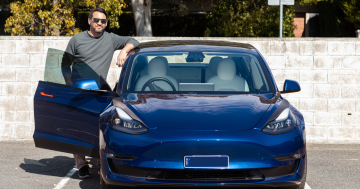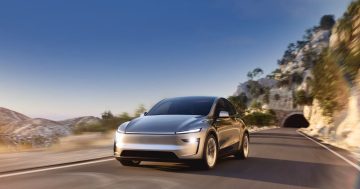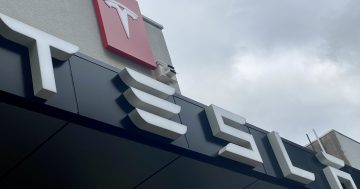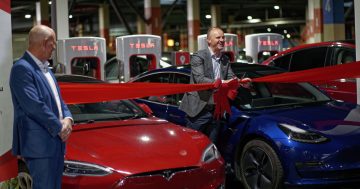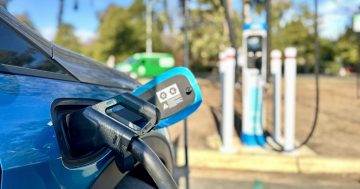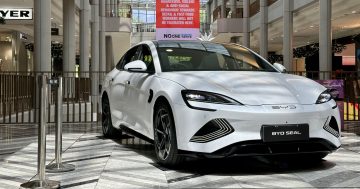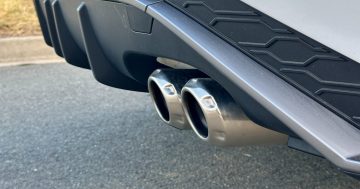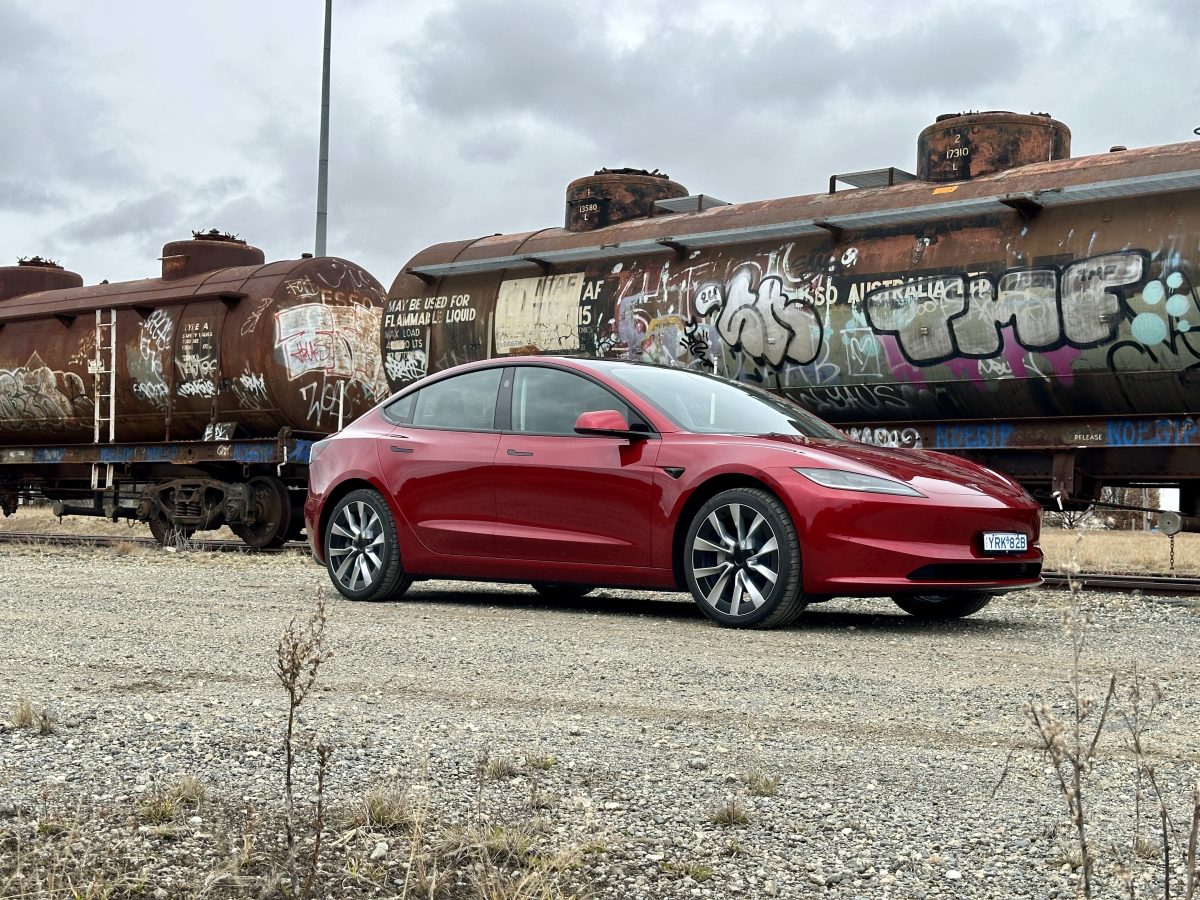
The base Rear Wheel Drive models now starts from $54,990. Photo: James Coleman.
We’re told that once you’ve stumped up at least $40K for an electric vehicle, the running costs could be funded by the minimum wage but this isn’t necessarily true.
There’s the fact that on a return trip between Canberra and Wagga, I spent about $15 on coffee while waiting for my Tesla to charge at the public Supercharger stations along the way.
And then, while plugged in at Gundagai and watching the green bar creep towards 100 per cent, I discovered another running cost.
Tesla updated its ubiquitous Model 3 earlier this year, and we’ll get to some of the other new features in a moment, but among them is a game called ‘Beach Buggy 2’. Think ‘Mario Kart’, but you use the car’s steering wheel to turn, and yes, the wheels do move too.
EVs already tend to churn through tyres, due to an unhealthy blend of weighty batteries and instant torque, but I imagine it happens even faster when you’re grinding the tread into the pavement while playing Beach Buggy 2 on the iMax touchscreen.
All jokes aside, however, that return trip to Wagga cost me about $40, or about the same – if not more – than the petrol would have cost me.
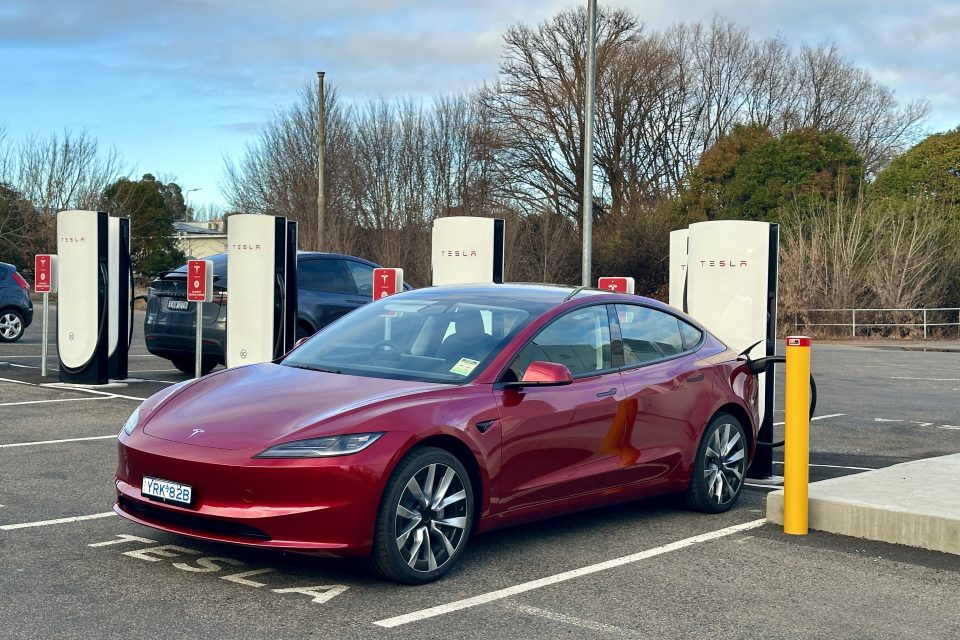
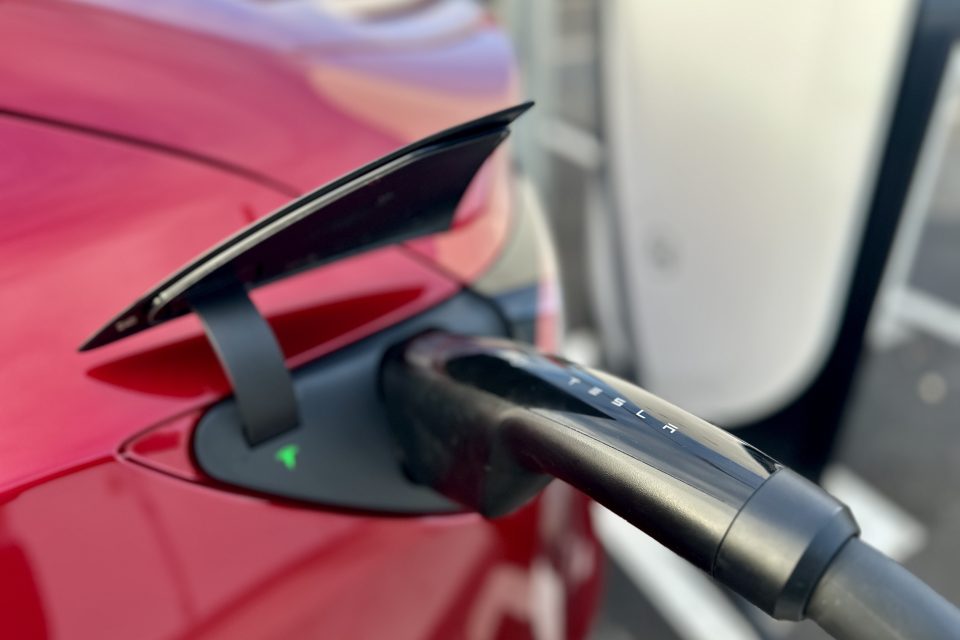
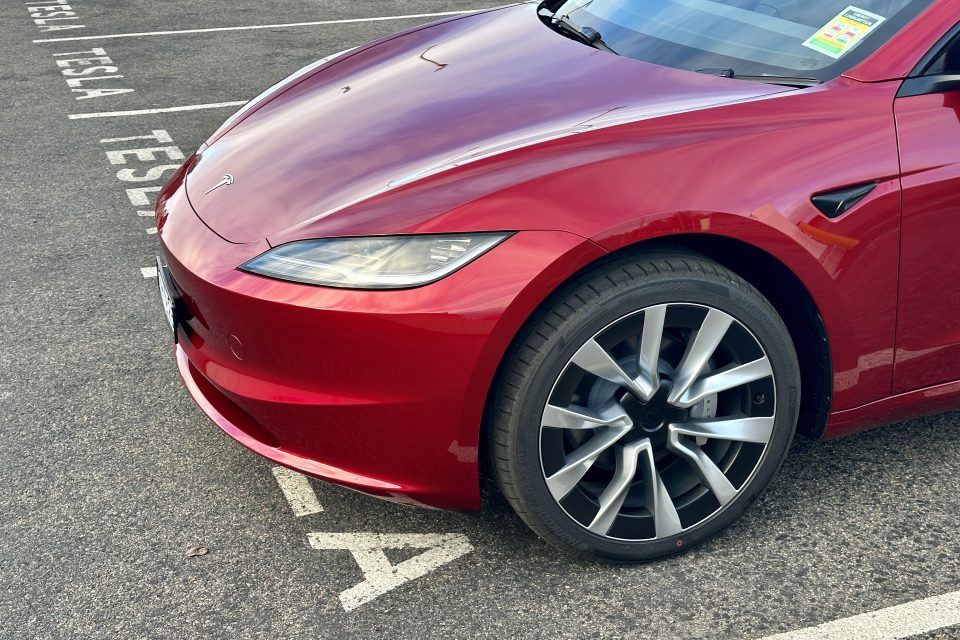
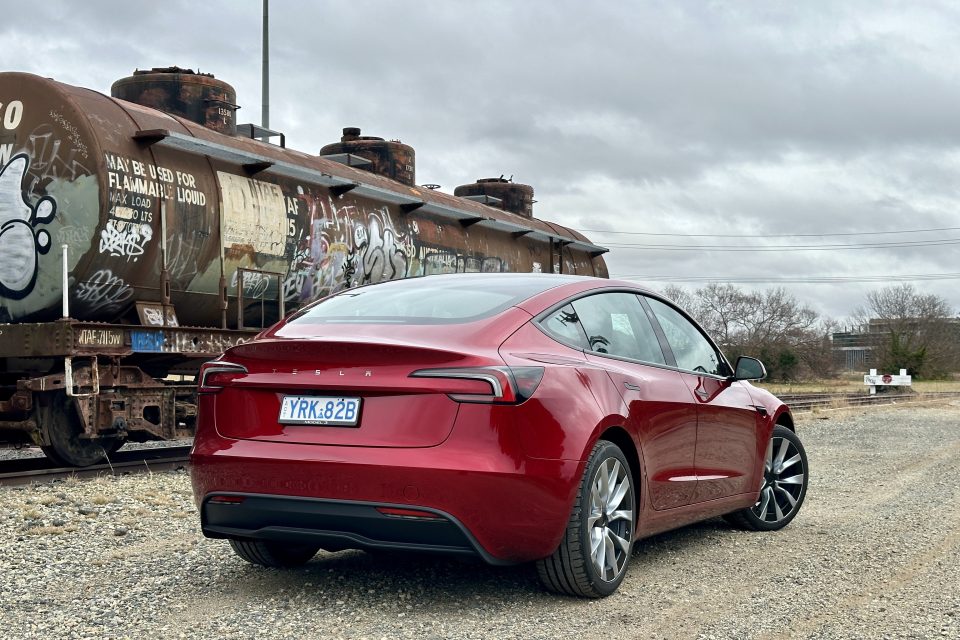
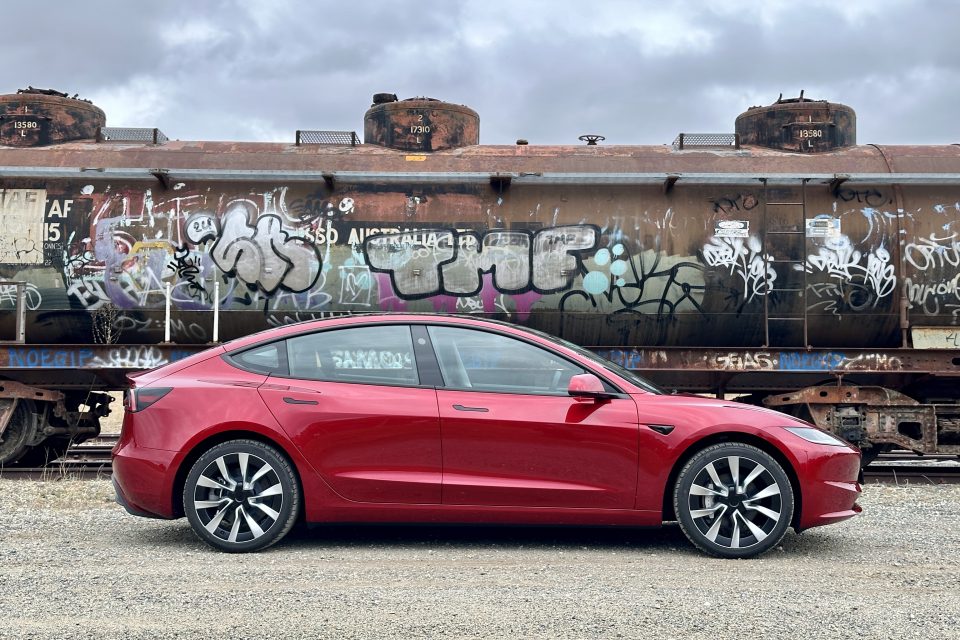
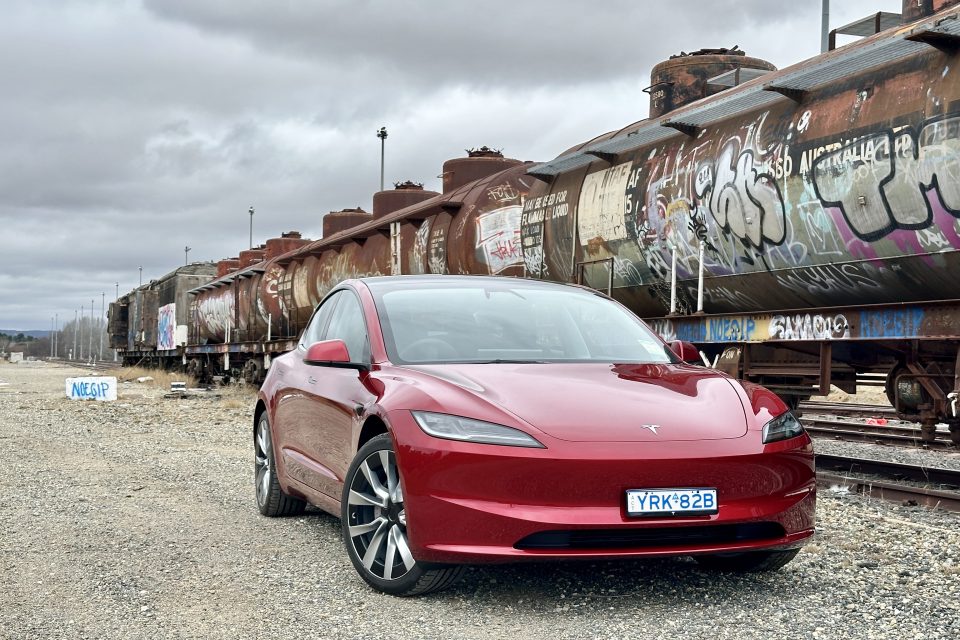
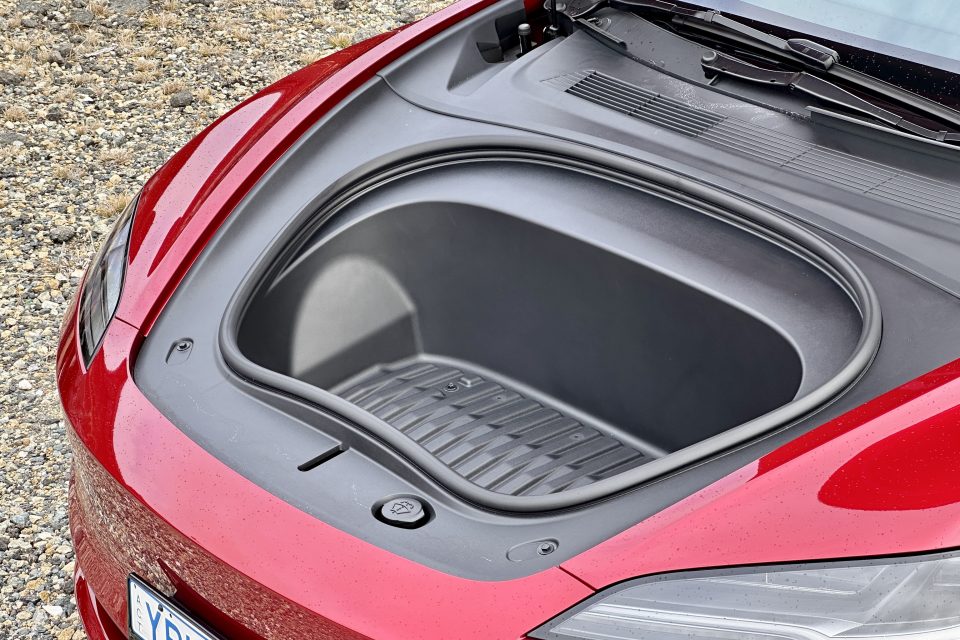
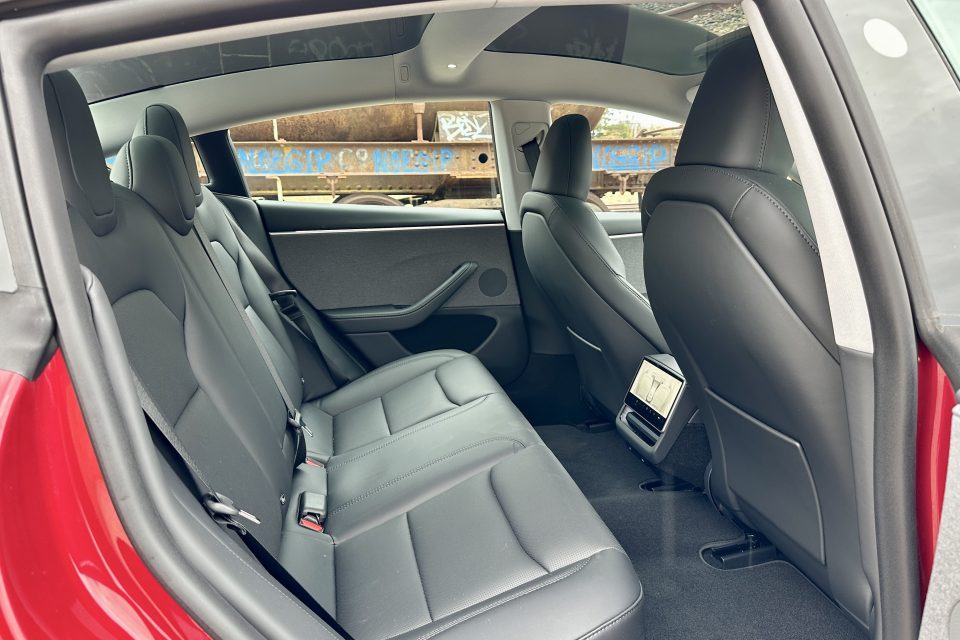
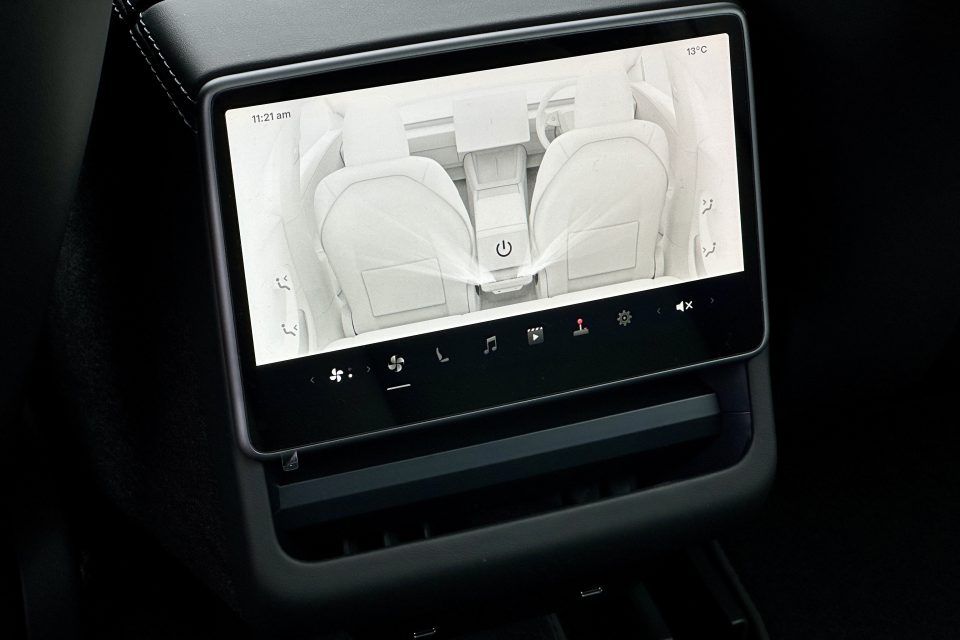
Credit where credit is due, the Supercharger network is one of the reasons Tesla has rocketed to become the best-selling EV brand in Australia.
Enter your destination into the car’s navigation and it will work out where it needs to charge, for how long, and for how much. It’s easy. And fast – I was getting from 50 per cent to 100 within half an hour. Or enough time for a toilet stop and an overpriced coffee.
I continued thinking happy thoughts until the family and I took a Saturday jaunt to Goulburn, where all the horror stories came true.
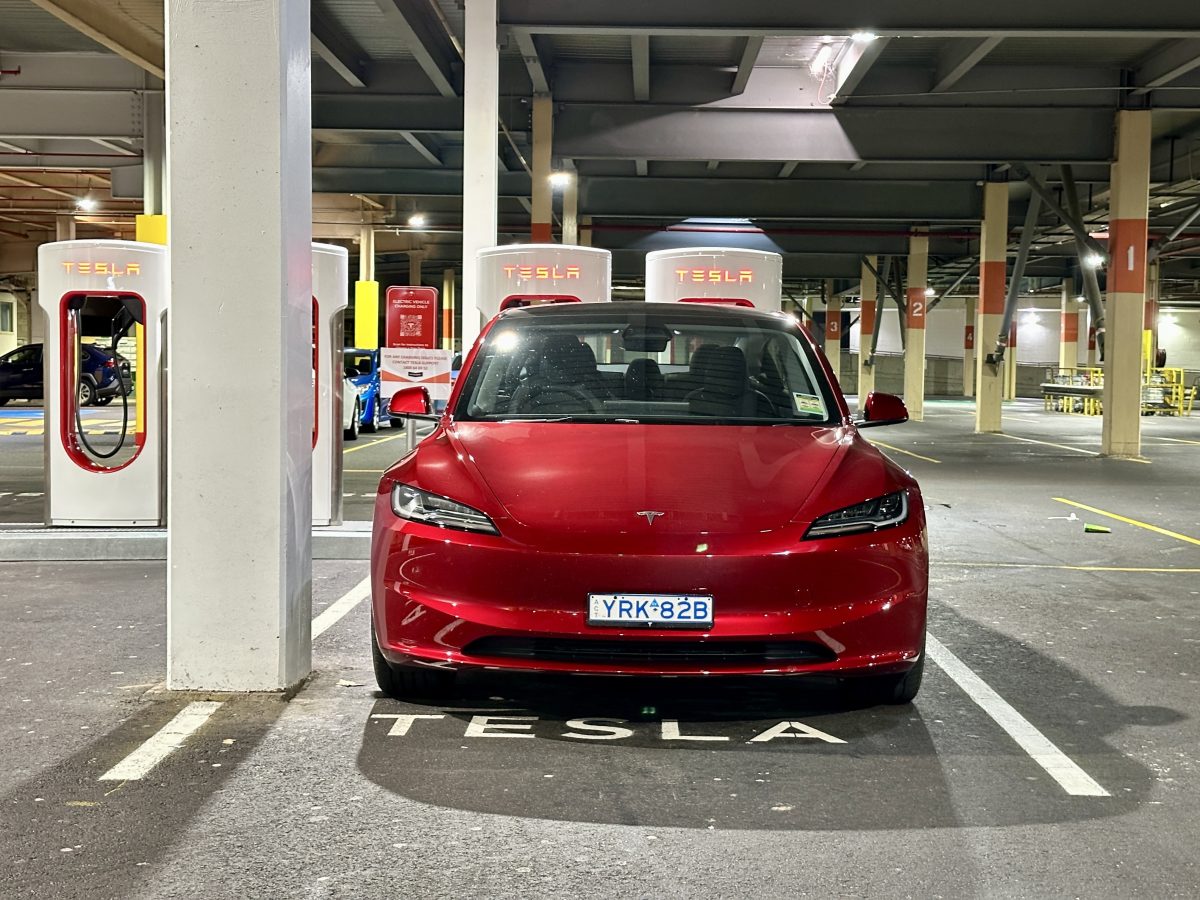
And … charging again, this time at South.Point, Tuggeranong. Photo: James Coleman.
Every single one of the town centre’s Superchargers was occupied, with a queue. So while the rest of the family hoed into the picnic lunch in the nearby park, I was standing out in the car park, talking with the other waiting Tesla owners about different charge port types.
I didn’t have to wait long, granted, and the car estimated it would take about an hour to reach full. Fine, I’ll go eat what’s left of lunch.
Except it didn’t reach full. Because at 53 per cent, it suddenly decided to stop charging. This meant, on arrival back in Canberra, I had to sit at a Supercharger in Tuggeranong’s South.Point car park for another half an hour.
Would this happen if I owned it, and could plug it in at home? Probably not. But what if I lived in an apartment, with no access to my own private charger? Hit-and-miss public chargers would be my bread and butter.
EVs are perfect for around town. For anything interstate, however, be prepared to spend a lot of the trip with your head completely occupied about where to get the next top-up. And then waiting in the car park of said top-up location, wearing out tyres while playing Beach Buggy 2.
The Tesla Model 3 has been the benchmark EV for years – the one all other EVs wanted to be when they grew up. It’s still the second best-selling EV in the country, after its SUV sibling, the Model Y. But the trouble is, all the other EVs have now grown up.
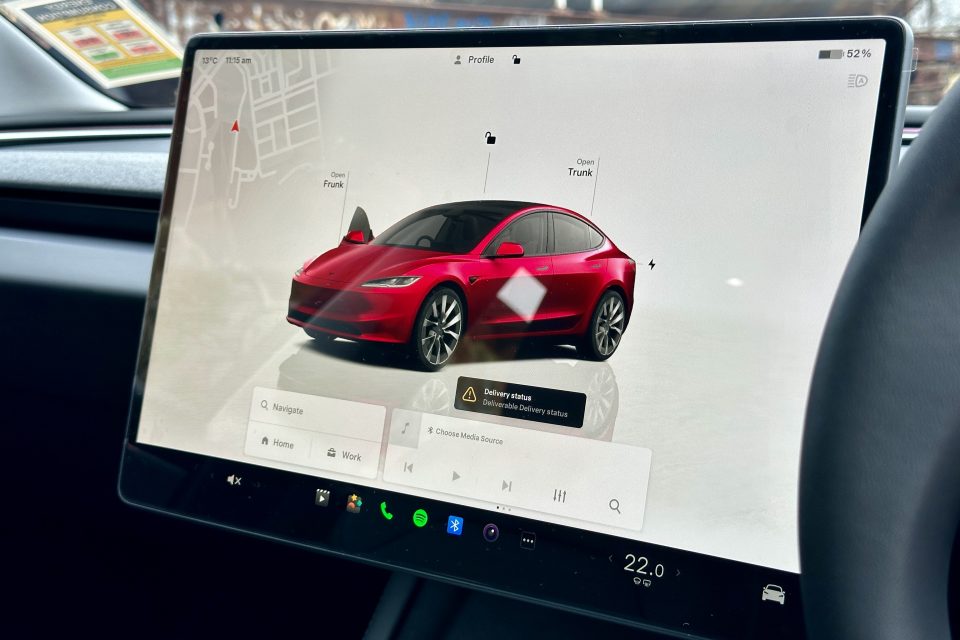
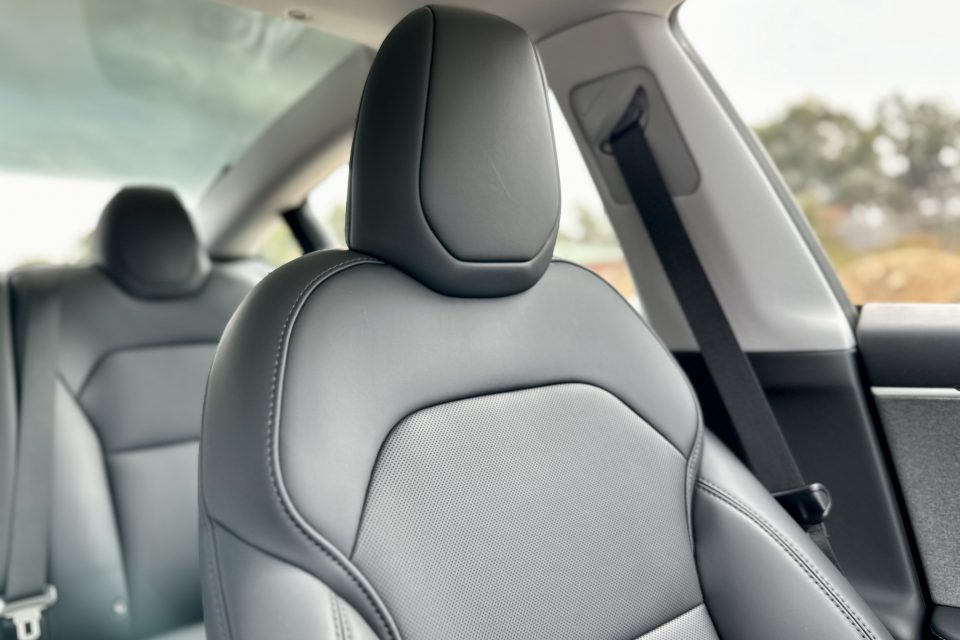
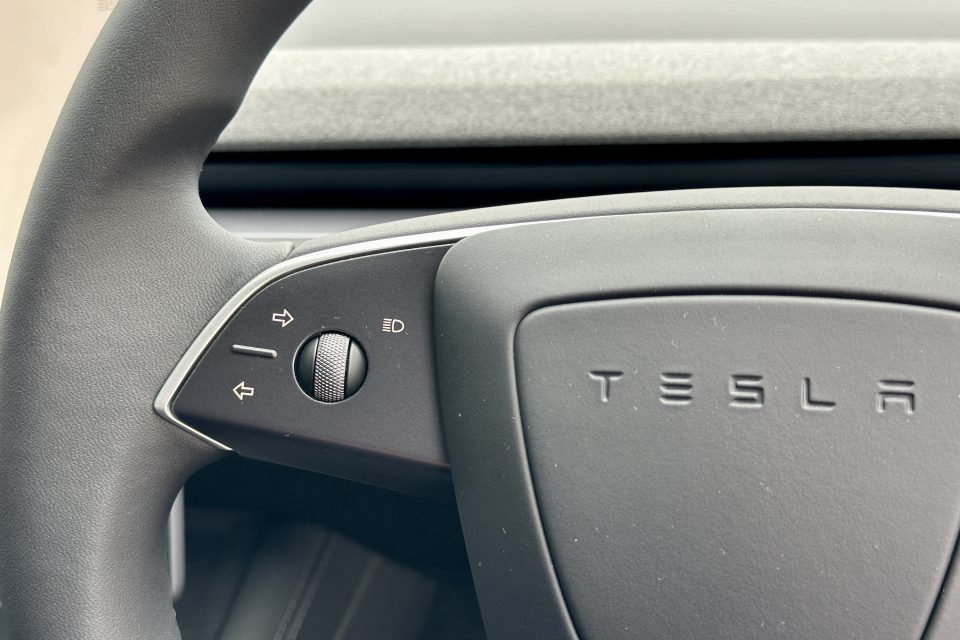
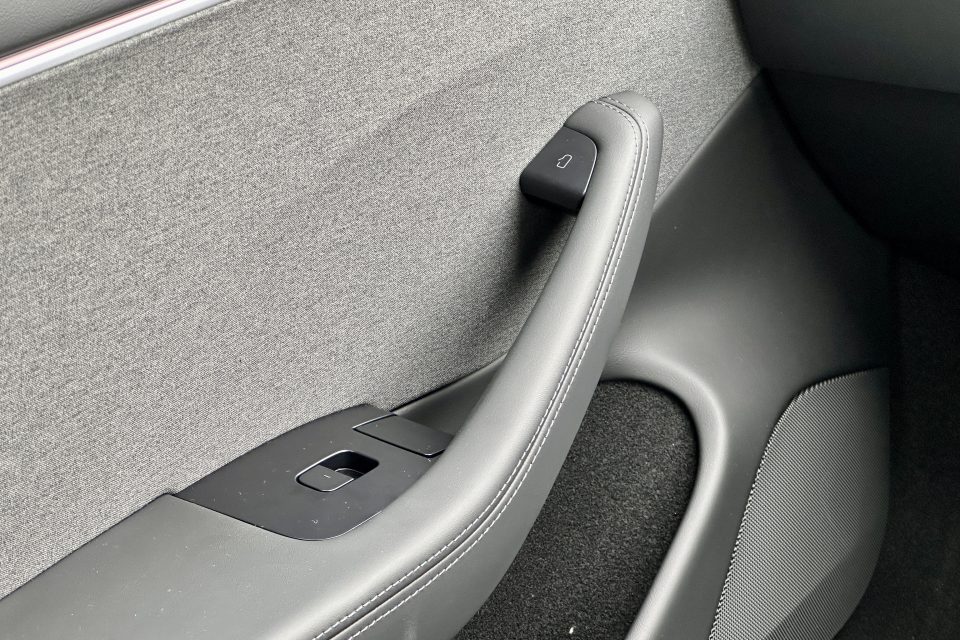
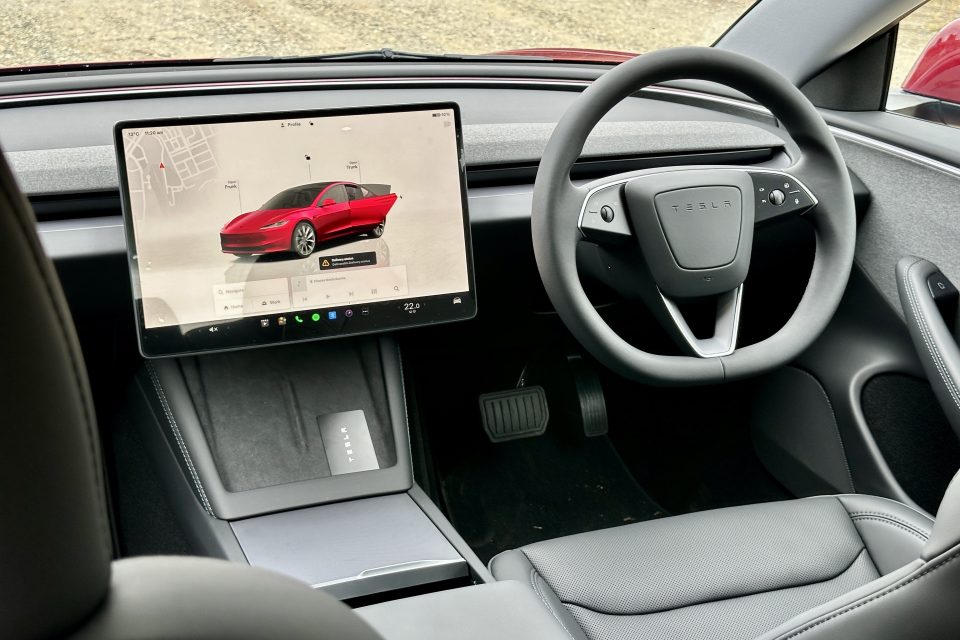
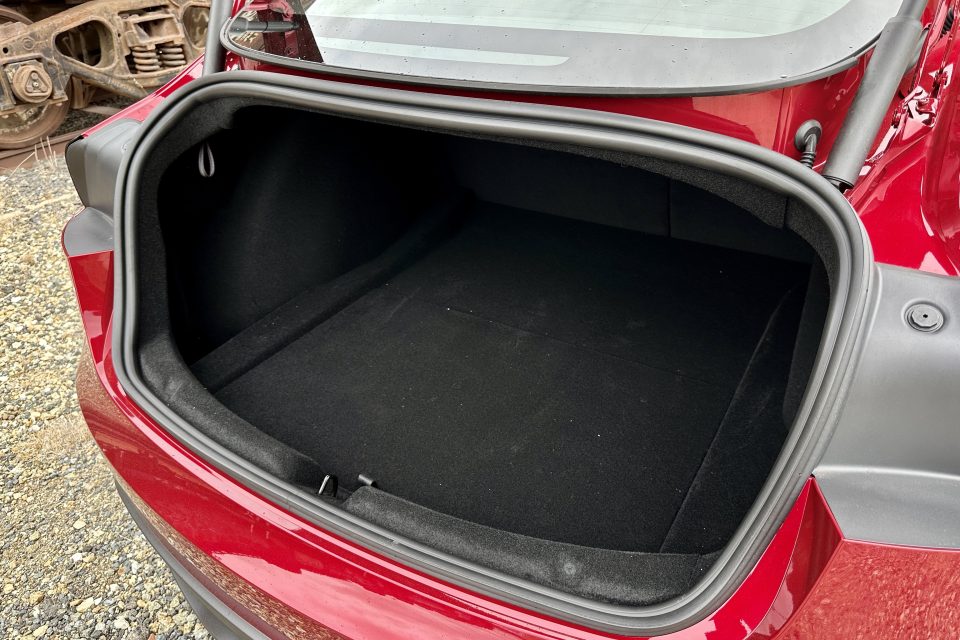
The proof is in the sales figures. In Canberra alone, Tesla racked up 1162 sales between January and June last year, but figures over the same period this year show that this has slumped to 989.
And even constant price cuts, to the point the Model 3 now costs several thousand less than it did a year ago, haven’t convinced the buyers now flocking for rivals from Chinese brands like BYD and MG.
Does this mean it’s no good then?
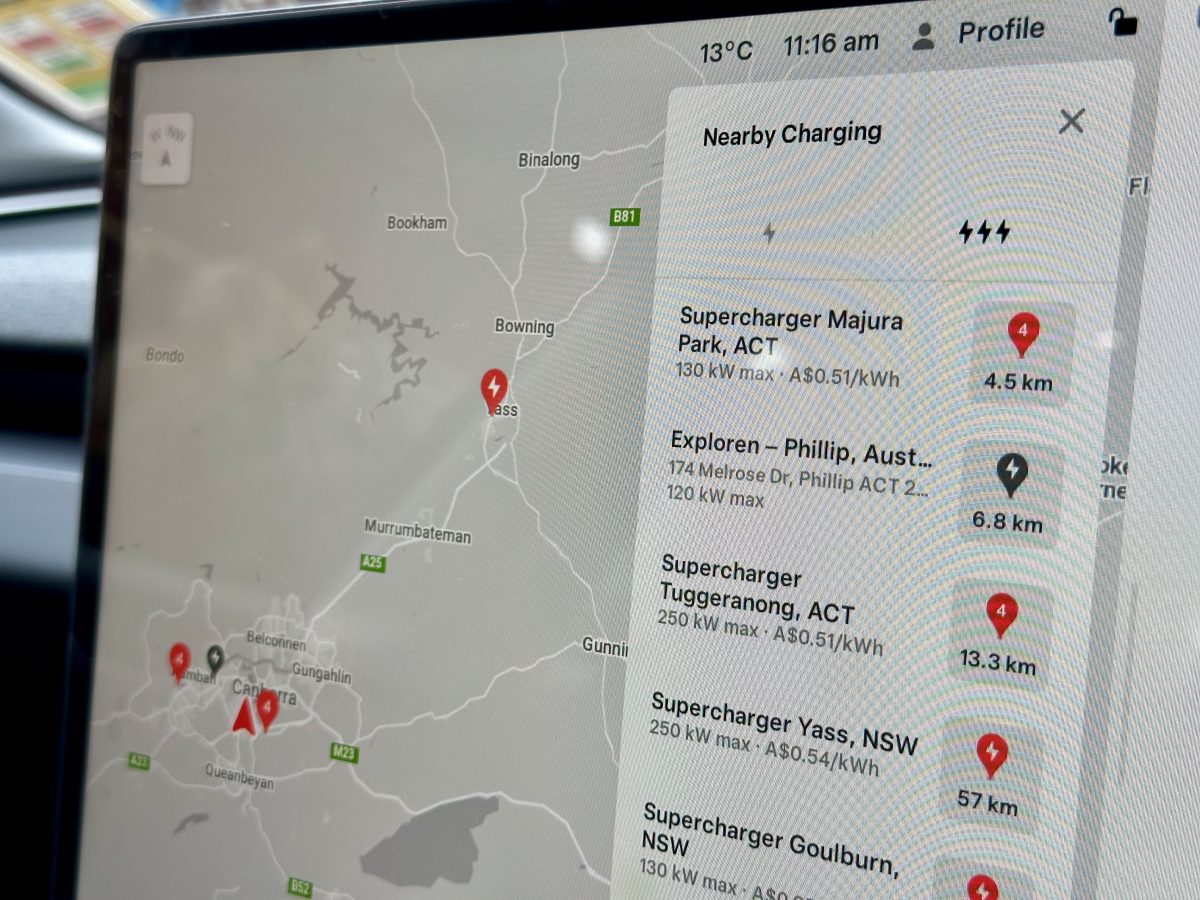
My nearest charger locations. Photo: James Coleman.
I borrowed the base Rear-Wheel Drive model. It’s very smooth to drive, even if you can feel the immense weight in the way it rides over bumps, or rather, flattens them. It also never fails to boggle the mind – or just lurch it into the back of your skull – with the way it gets up and goes.
Despite all the talk of panel gaps you could fit a whole continent in, I found everything to feel really very premium. Sound system included.
The 12-year-old boy inside every one of us can continue rejoicing too, because you can still set the Model 3 to make a fart noise when you lock it, and it has a ‘light-show’ mode where the lights will flash and the windows – and boot – open and close in time to music.
But while the update has made the front end sharper, and the rear lights more streamlined, to form something that’s really quite shapely, Tesla has also decided to turn the D, R, N and P options into a slider on the touchscreen. And the indicators are buttons on the steering wheel.
The rest of the world’s car-makers are finally realising how annoying digital buttons are, but Tesla is still going all out on it. Just why?
The regenerative braking system also isn’t adjustable, and having to always keep your foot on the accelerator to keep from braking is tiring. The only way to cruise is by using the cruise control.

Get yours in red, the best colour for a Tesla. Photo: James Coleman.
Which brings us to Autopilot – every car and its dog has steering and lane-keeping assistance systems fitted as standard nowadays, so unless it can change lanes for me (it can’t), it’s nothing to crow about really. You also miss out on a front camera.
The Tesla Model 3 is left feeling something we never thought it would: tired.
But then you realise you’re also getting an excellent Supercharger network thrown into this. Oh, wait…
2024 Tesla Model 3 Rear Wheel Drive
- $54,900
- Rear-wheel drive (RWD)
- 0-100 km/h in 6.1 seconds
- 513 km estimated driving range
- 1761 kg
- 5-star ANCAP safety rating
Thanks to Tesla Australia for providing this car for testing. Region has no commercial arrangement with Tesla Australia.












